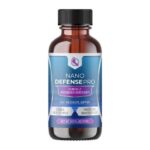For decades, athletes and fitness enthusiasts have sought ways to improve flexibility without sacrificing strength—or worse, risking injury. Enter hyperbolic stretching, a method that claims to unlock rapid gains in both range of motion and muscular power. But how does it work? This article dives into the neuroscience and physiology behind hyperbolic stretching, revealing why it’s more than just another fitness trend.
What Is Hyperbolic Stretching?
Hyperbolic stretching is a structured program combining principles from proprioceptive neuromuscular facilitation (PNF) and isometric strength training. Unlike static stretching (holding a pose) or dynamic stretching (movement-based), hyperbolic stretching uses timed, targeted contractions and relaxations to “trick” the nervous system into allowing deeper stretches.
The goal? To simultaneously improve flexibility, build strength at end-range positions, and reduce the risk of injury.
The Physiology of Flexibility: Why Stretching Isn’t Just About Muscles
Flexibility is often misunderstood as simply “lengthening muscles.” In reality, it involves a complex interplay between:
- Muscles: Composed of sarcomeres (contractile units) and connective tissue (fascia).
- Tendons and Ligaments: Connective tissues that stabilize joints.
- The Nervous System: Controls the stretch reflex, a protective mechanism that tightens muscles when they’re overextended.
When you stretch, your muscle spindles (sensory receptors) detect tension and signal the spinal cord to contract the muscle—a reflex that prevents tearing. Hyperbolic stretching works by overriding this reflex through strategic techniques.
The Science Behind Hyperbolic Stretching
1. Proprioceptive Neuromuscular Facilitation (PNF)
PNF is a gold standard in rehabilitation and athletic training. It involves:
- Contract-Relax: Stretching a muscle, contracting it against resistance for 5–10 seconds, then relaxing into a deeper stretch.
- Hold-Relax: Similar but focuses on isometric holds.
How It Works:
- Contractions fatigue the muscle, reducing its ability to trigger the stretch reflex.
- Golgi tendon organs (GTOs), which sense tension in tendons, send signals to inhibit muscle contraction, allowing safer elongation.
A 2017 study in Journal of Human Kinetics found PNF increased hamstring flexibility by 18% more than static stretching.
2. Isometric Strength Training
Hyperbolic stretching integrates isometric holds (static contractions) at stretched positions. Example: Holding a deep lunge while engaging the glutes.
Benefits:
- Strengthens muscles at their longest length, improving functional range.
- Increases tendon stiffness, enhancing force production.
3. Neurological Adaptation
Consistent hyperbolic stretching trains the nervous system to tolerate greater stretches. Over time, the brain “recalibrates” what it perceives as a safe range of motion.
Hyperbolic Stretching vs. Traditional Methods
| Method | Mechanism | Strengths | Weaknesses |
|---|---|---|---|
| Static Stretching | Passive holds | Improves relaxation | Limited strength gains |
| Dynamic Stretching | Movement-based stretches | Enhances warm-up mobility | Doesn’t target end-range strength |
| Hyperbolic Stretching | PNF + isometrics | Boosts flexibility and strength | Requires technique precision |
5 Proven Benefits of Hyperbolic Stretching
- Rapid Flexibility Gains: By bypassing the stretch reflex, users often see progress in weeks, not months.
- Injury Prevention: Stronger muscles at extended ranges protect joints during sports or lifting.
- Enhanced Athletic Performance: Greater range of motion improves power in movements like kicks, squats, and sprints.
- Improved Posture: Counteracts stiffness from sitting by opening hips, shoulders, and spine.
- Mind-Body Connection: Teaches control over muscle tension, aiding relaxation and recovery.
How to Practice Hyperbolic Stretching Safely
Sample Routine for Hip Flexibility
- Pigeon Pose (Contract-Relax):
- Sit in a pigeon pose. Press your front knee into the floor (5% effort) for 10 seconds.
- Relax and sink deeper into the stretch. Hold 30 seconds. Repeat 3x per side.
- Isometric Couch Stretch:
- In a kneeling lunge, place your back foot on a couch. Engage your glutes and quads for 20 seconds.
- Relax and hold the stretch for 30 seconds.
Key Tips
- Warm Up First: 5–10 minutes of light cardio (e.g., jogging).
- Avoid Pain: Stretch to discomfort, not pain.
- Breathe Deeply: Oxygenation reduces tension.
The Research: What Studies Say
- A 2020 Sports Medicine review confirmed PNF’s superiority in improving flexibility compared to static stretching.
- Isometric training at long muscle lengths increased strength by 28% in a Journal of Applied Physiology study.
- Hyperbolic stretching’s combination of PNF and isometrics is backed by its roots in physical therapy and sports science.
Who Should Try Hyperbolic Stretching?
- Athletes: Boost performance in sports requiring mobility (yoga, martial arts, gymnastics).
- Weightlifters: Safely achieve deeper squats and overhead presses.
- Desk Workers: Combat tight hips and hunched shoulders.
Conclusion: The Future of Flexibility Training
Hyperbolic stretching bridges the gap between flexibility and strength, offering a science-backed path to unlocking your body’s full potential. By leveraging neuromuscular principles and isometric training, it delivers faster, safer results than traditional methods. Whether you’re an athlete or a weekend warrior, this approach could revolutionize how you move—and perform.
Ready to get started? Follow the sample routine above or explore guided hyperbolic stretching programs for structured progress.





